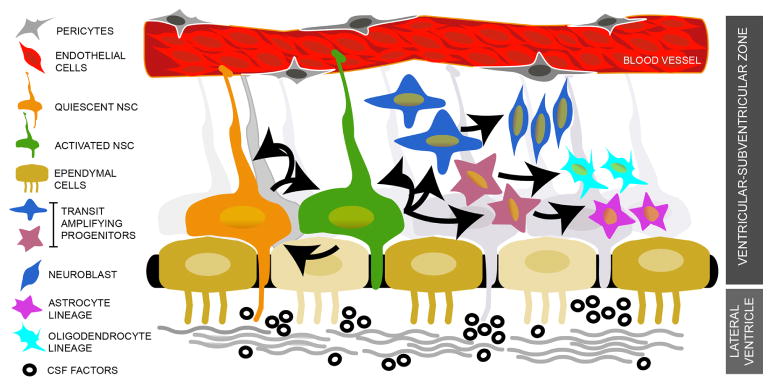Figure 1.
Schematic Diagram of the Ventricular-Subventricular Zone (V-SVZ) Neurogenic Niche. Quiescent and activated neural stem cells (NSC) interact closely with other cell types within the V-SVZ such as the ependymal cells, endothelial cells, pericytes, postmitotic neurons, oligodendrocytes, and astrocytes. Additionally, since NSCs line the lateral ventricles, these cells are in contact with factors present in the cerebrospinal fluid (CSF). The result of these interactions contributes to the proliferative and differentiation capacities of NSCs, which is capable of self-renewal and the generation of lineage-specific transit amplifying cells that will either proliferate or differentiate into neurons or glial cell types.

